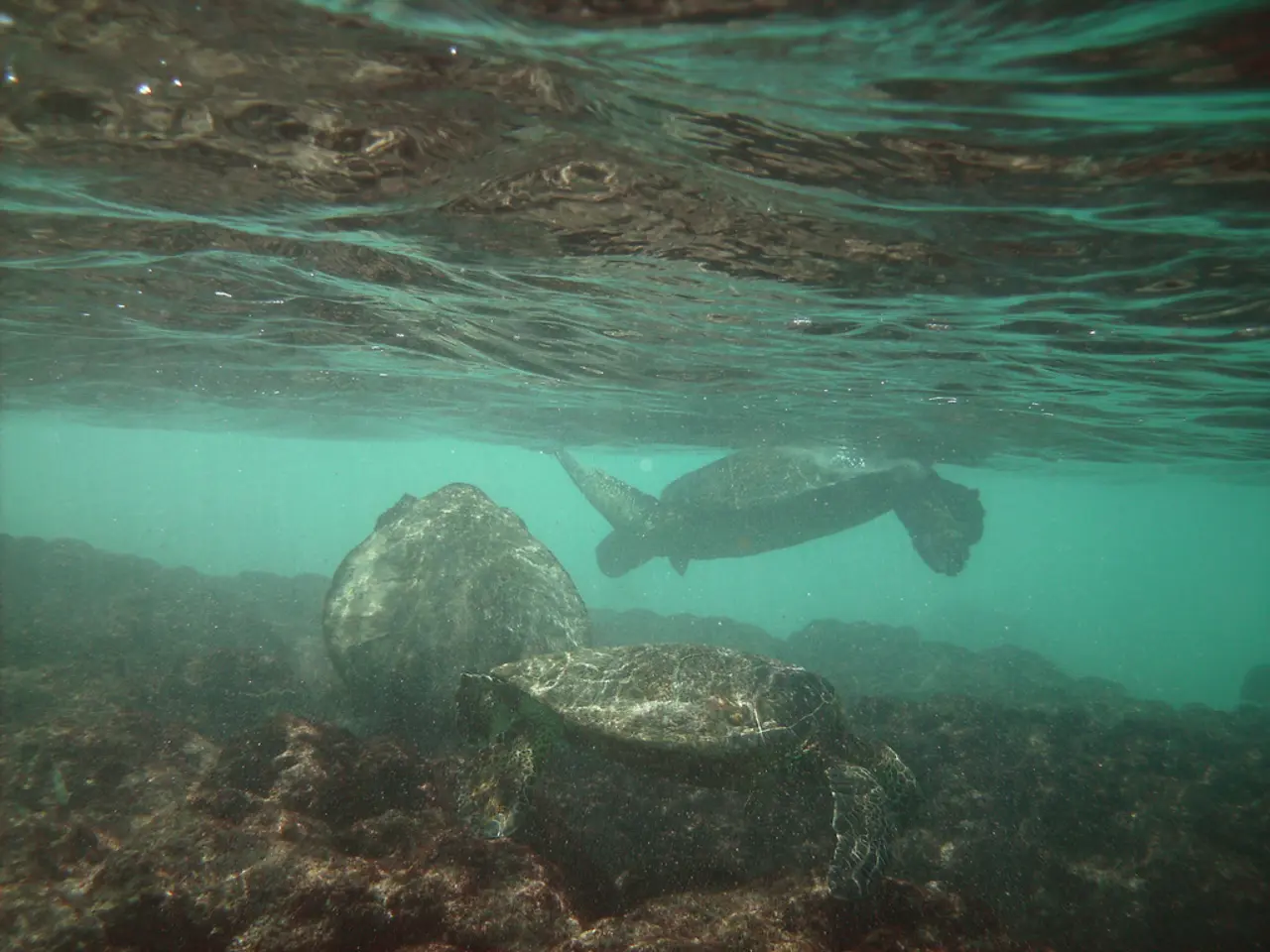Videos from drones showcase the largest turtle nesting spot globally.
In a groundbreaking study, researchers have successfully estimated the population of the endangered giant South American river turtle, using innovative drone technology and sophisticated statistical modeling. The Guapore River, located between Bolivia and Brazil, has proven to be a significant nesting site for the species.
The study, published in the Journal of Applied Ecology, found approximately 41,000 females of the species in a nesting site on the Guapore River. This aggregation surpasses any previous records for turtle populations.
To achieve this, the team used aerial drone images to create orthomosaics - high-resolution images stitched together from hundreds of overlapping photos. Over a 12-day period, they flew drones back and forth four times daily, capturing detailed images of turtle nesting activities.
To ensure turtles were not counted multiple times, the researchers marked over 1,000 turtles with white paint and tracked them using drone imagery. This approach, which combined photography with statistical modeling, marked a significant improvement in population estimation methodologies.
The use of drone technology, combined with advanced statistical modeling, has proven highly effective in accurately estimating populations of elusive wildlife species such as the giant South American river turtles. This method offers advantages including reduced animal disturbance, avoidance of obstructions common in ground counts, and uniformity across sites and years, leading to more precise and scalable population monitoring.
The large number of turtles found during the study underscores the importance of accurate population counts for evaluating the success of conservation initiatives. Understanding the size and health of this population can help inform more effective conservation policies and actions.
The Guapore River sandbanks provide an essential nesting ground that supports the reproductive cycle of the giant South American river turtles. This study offers hope to conservationists by providing a more reliable way to track the population's progress over time. The innovative methods used in this study, such as drone technology and statistical modeling, offer a promising solution to the problem of accurately counting species populations, particularly for endangered or declining species.
Without accurate population counts, it is difficult for conservationists to gauge the health of a population or the effectiveness of protective measures. The authors of the study emphasized the significance of this finding, stating that the total population size was estimated as ~41,000 turtles for the 12 days of the nesting season.
Researchers expect that such drone-based protocols will increasingly be adopted by governmental and non-governmental organizations for ecological monitoring. This technology supports conservation by offering reliable data to detect population trends and guide protective efforts.
Science has shown that the use of drone technology and advanced statistical modeling can greatly aid in the study of environmental-science, particularly in health-and-wellness issues concerning endangered species like the giant South American river turtle. For instance, a recent study on the Guapore River revealed an estimated population of approximately 41,000 females, which emphasizes the need for precise population counts in evaluating conservation efforts.




